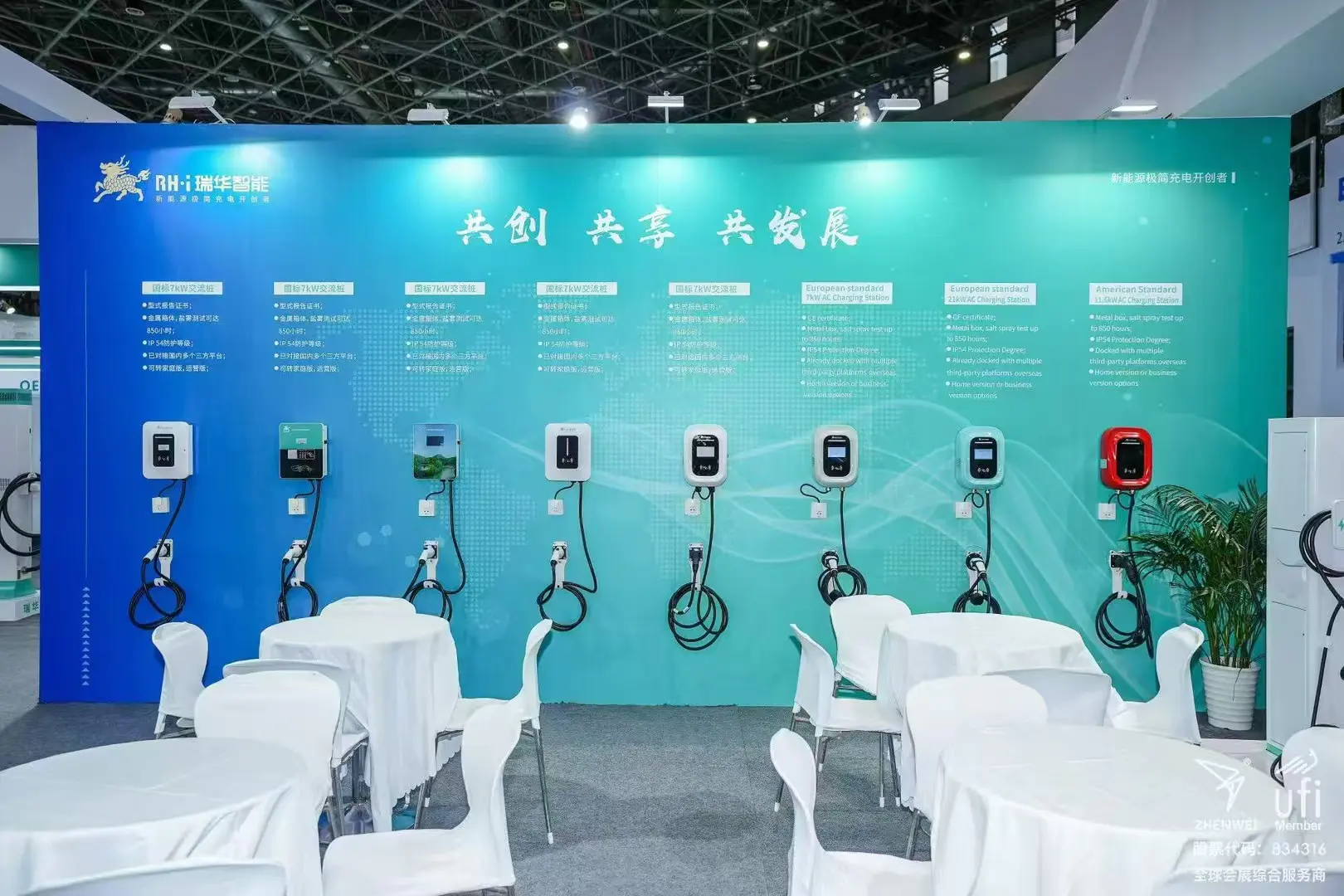what is chademo charging?
Have you ever been confused by the variety of charging connectors for electric vehicles? From Type 1 and Type 2 to CCS, Tesla’s proprietary supercharger, and the UK’s “three-pin plug”, the variety of charging connectors is almost as complex as the models.
Among the many standards, CHAdeMO (Charge de Move) stands out for its unique advantages – it is a Japanese-led DC fast charging technology with high power output (up to 500kW), intelligent dynamic regulation, and a high performance. 500kW), intelligent dynamic regulation and bi-directional charging (V2G) at its core, still dominates the Japanese market.
Whether it’s a classic car like the Nissan Leaf or a next-generation V2G-enabled electric vehicle, CHAdeMO enables “flash recharging” and even reverse powering to the grid.
What is CHAdeMO?
CHAdeMO is an electric vehicle connector that provides fast charging and is popular at fast charging stations. While a typical home charging unit provides a 7kW charging rate, the CHAdeMO unit really takes it up a notch and can reach the 400kW range.
In the Nissan LEAF, the CHAdeMo connector can charge from 20% to 80% in just 60 minutes. This is ideal for charging on the go and perfect for long trips.

How do CHAdeMO connectors work?
CHAdeMO connectors use direct current (DC) to power up the car’s battery and carry out the conversion from alternating current (AC) in the charging point. AC is what the national grid in the UK supplies, so the conversion is necessary for the charging of our EVs.
If you choose to charge with a standard AC home charger, the vehicle itself will carry out the conversion to DC. It used a rectifier to convert the AC power into DC that the vehicle can use.
Choosing a CHAdeMO connector that can do those conversions itself means it can charge quicker.
Cars Using CHAdeMO Connectors (as of 2025)
CHAdeMO connectors are predominantly adopted by Japanese automakers and select international models. Below is a breakdown of key brands and models:
| Brand | Model | Notes | Markets |
| Nissan | Leaf (all generations) | Standard CHAdeMO port | Global markets |
| Ariya | Early models support CHAdeMO; newer versions switched to CCS | Early markets (e.g., Japan, Europe) | |
| Mitsubishi | i-MiEV | Early EV microcar with CHAdeMO | Japan, Europe |
| Outlander PHEV | Supports CHAdeMO DC fast charging + bidirectional charging (V2X) | Global markets | |
| Toyota | bZ4X | CHAdeMO port exclusive to Japanese-market variants | Japan |
| Subaru | Solterra | Shares platform with Toyota bZ4X; CHAdeMO in early Japan/EU models | Japan, Europe |
| Kia | Soul EV (1st gen) | Early EV models with CHAdeMO | South Korea, US, Europe |
| Citroën | ë-C4 | Limited CHAdeMO availability in early releases | Europe |
| Peugeot | e-208 | Optional CHAdeMO in select markets (e.g., Japan) | Japan, Europe |
| Aptera | Solar EV prototypes | Experimental CHAdeMO integration | North America (testing) |
Key Notes:
- Declining Adoption:
- Non-Japanese automakers (e.g., Hyundai, Tesla) now prioritize CCS or NACS (Tesla standard).
- CHAdeMO remains dominant in Japan for bidirectional charging (V2X) applications (e.g., emergency power, grid support).
- Usage Tips:
- Confirm charging port type for newer models (e.g., Nissan Ariya phased out CHAdeMO post-2023).
- CHAdeMO charging stations are less common in Europe/North America compared to CCS; plan routes using apps like PlugShare.

What is CCS?
Combined Charging System (CCS) – a universal protocol that streamlines EV charging by combining AC (for slower home charging) and DC (for ultra-fast public stations) into a single, future-proof connector.
Why CCS matters:
- Integrated Design: Unlike CHAdeMO (which requires a separate DC-only port), CCS merges AC and DC pins into one plug, reducing clutter and simplifying vehicle design.
- Regional Dominance: CCS1 (North America) and CCS2 (Europe) are now mandated by regulators, making them the go-to standards for most automakers.
- Scalability: Supports up to 350 kW+ charging speeds (vs. CHAdeMO’s 400 kW), with upgrades pushing toward 500+ kW for next-gen EVs.
Want to learn more about CCS’s role in the EV revolution and how it stacks up against legacy standards? Check out my full blog post here: What is CCS.
CHAdeMO vs. CCS
CHAdeMO and CCS are two well-known EV charging standards with unique characteristics and regional advantages. CHAdeMO is known for its specific connectors and popularity in Japan and Asia, while CCS offers a hybrid connector design widely adopted in North America and Europe.
Both systems require advanced technology setups to support their high power charging capabilities. Let’s take a closer look at the differences between CHAdeMo and CCS.
CHAdeMO vs CCS Features Comparison
| Feature | CHAdeMO | CCS |
| Connector Type | Dedicated DC port, incompatible with other systems | Hybrid connector (combines AC + DC charging) |
| Number of Pins | 9 pins | 7 pins (CCS1/CCS2 design is more compact) |
| Regional Dominance | Japan and parts of Asia (e.g., Nissan Leaf) | North America (CCS1), Europe (CCS2), and China |
| Technical Requirements | High-voltage DC, dedicated transformers, integrated control systems | High-voltage DC, dedicated transformers, integrated control systems |
| Communication Protocol | CAN bus (high noise resistance) | PLC (Power Line Communication, supports smart grid integration) |
| Maximum Power | 400 kW (CHAdeMO 3.0) | 350 kW (current mainstream), 500+ kW (MCS megawatt-level evolution) |
| Additional Features | Mature V2X bidirectional charging (vehicle-to-grid/home energy storage) | V2X support in development (limited standardization) |
Understanding these differences helps in making informed decisions about EV infrastructure and vehicle compatibility. RUIHUA provides the tools and support needed to manage both CHAdeMO and CCS charging stations, ensuring compatibility and efficient operations.
Advantages of CHAdeMO
CHAdeMO offers several advantages, including fast and convenient charging, broad compatibility with various vehicle models, cost-effectiveness, and reliable performance. Let’s learn more about the advantages in detail.
- Inexpensive and Reliable: Known for its cost-effectiveness and reliability, CHAdeMO has a robust infrastructure, especially in Japan and parts of Europe, making it a dependable choice for EV owners.
- Convenient and Quick Charging: CHAdeMO supports fast charging, allowing EVs to charge up to 80% in about 30 minutes, reducing downtime and making long trips more feasible.
- Compatible with Several Vehicle Models: Widely adopted by many EV manufacturers, including Nissan, Mitsubishi, and Toyota, ensuring broad compatibility across different models.
- Early Adoption and Established Network: Being one of the first fast-charging standards, CHAdeMO has an extensive and well-established network, particularly in its home market of Japan.
- Bi-Directional Charging (V2G): Supports Vehicle-to-Grid (V2G) technology, allowing EVs to return power to the grid, aiding in energy management and providing backup power during outages.
- Proven Safety and Performance: Extensive testing and widespread use have demonstrated CHAdeMO’s safety and performance, earning trust among users and manufacturers.
Disadvantages of CHAdeMO
While CHAdeMO has been a pioneering standard in the electric vehicle (EV) charging landscape, several limitations affect its global adoption and versatility. Here are the primary disadvantages of the CHAdeMO charging system.
- Only Supports DC Fast Charging: Unlike some other standards that offer both AC and DC charging options in a single connector, CHAdeMO is designed exclusively for DC fast charging. This specialization means it cannot provide the flexibility of slower AC charging, which is useful for overnight or long-duration charging.
- Limited Use Outside Japan and Asia: CHAdeMO is predominantly used in Japan and parts of Asia, with significantly fewer charging stations available in North America and Europe. This regional limitation restricts the convenience for EV owners travelling or residing outside these areas.
- Non-CHAdeMO Vehicles Need Costly Adapters: Vehicles not equipped with CHAdeMO connectors require expensive adapters to use CHAdeMO charging stations. This additional cost can be a barrier for EV owners who need access to a wider range of charging infrastructure.
These factors contribute to the ongoing evolution and competition within the EV charging standards landscape.
Advantages of CCS
The Combined Charging System (CCS) has gained significant traction in the electric vehicle (EV) industry due to its versatile design and widespread adoption. Here are the key advantages of CCS.
- Integrates Both AC and DC in One Connector: The hybrid connector design of CCS combines AC (alternating current) and DC (direct current) charging capabilities into a single interface. This integration allows for the flexibility of slow AC charging at home or work and fast DC charging at public stations, simplifying the charging process for EV owners.
- Widely Adopted by Many Major Auto Manufacturers: CCS is supported by numerous leading automakers, including Audi, BMW, Ford, General Motors, Hyundai, Kia, Porsche, and Volkswagen. This broad industry backing ensures extensive compatibility across various EV models and promotes a unified charging infrastructure.
- Faster Charging Times and Bidirectional Charging Support (V2G): CCS supports high-power DC fast charging, with typical power levels ranging from 50kW to 350kW. This enables rapid charging times, with some stations capable of recharging an EV to 80% in as little as 20-30 minutes. Additionally, CCS supports bidirectional charging, also known as Vehicle-to-Grid (V2G), allowing EVs to return power to the grid, aiding in energy management and providing backup power during outages.
Disadvantages of CCS
While the Combined Charging System (CCS) offers numerous benefits and has become a popular choice among many EV manufacturers, it also has its drawbacks. Here are the key disadvantages of CCS.
- May Not Be Compatible with Older EV Models: CCS is a relatively newer standard, and as such, it may not be compatible with older electric vehicle models that were designed before CCS became prevalent. This incompatibility can limit the use of CCS chargers for owners of earlier EV models, who may need to rely on different charging standards.
- Limited Presence in Some Regions Outside Europe and North America: Despite its widespread adoption in Europe and North America, CCS infrastructure is still limited in some regions, such as parts of Asia and developing countries. This can pose challenges for EV owners in these areas, where CCS charging stations may be sparse or nonexistent.
- Requires Separate Adapters for Non-CCS Vehicles: Vehicles that do not come equipped with CCS connectors need separate adapters to use CCS charging stations. These adapters can be expensive and add complexity to the charging process, posing an additional barrier for non-CCS EV owners who wish to access CCS infrastructure.
These factors must be considered by EV owners and manufacturers when planning charging infrastructure and vehicle compatibility.
Conclusion
CHAdeMO is synonymous with Japanese EVs and V2G technology, and remains an irreplaceable solution in certain scenarios. The choice needs to be balanced against model compatibility, regional infrastructure and future technology needs.
